Summary
- Unveil the true power of the Cretaceous period with four new species
- See how these fascinating dinosaurs are brought to life in-game
- Out Now on Xbox Series X|S and Xbox One
Introduce four ferocious new predators to your parks with Jurassic World Evolution 2: Cretaceous Predator Pack! This latest update brings four extraordinary species to the game that are sure to stop your parks guests in their tracks. Manage and control these striking dinosaurs as they fight for dominance in your parks and search for their next meal.
Bringing these fascinating dinosaurs to Jurassic World Evolution 2 requires a lot of work from our talented team, and in this post, we’re going to show you how each species is brought to life, from start to finish.
Gigantoraptor
Let’s start with the Gigantoraptor, the hero from our Key Art and my favourite from the update. This is the largest known Oviraptorosaur from the Late Cretaceous era and features a stunning coat of feathers and large elongated legs.
Before we can start modelling any of the species, the art team creates a concept for the design approach to the dinosaur. To kick things off we’ll produce some initial concepts on the shape of the species, paying special attention to any standout elements. In this case we focus on the Gigantoraptors legs, height, neck, feathers, and head. This is used as a starting point for the design and a foundation to make sure we get the important features nailed down early on. You can also see in this step that we have a few variations on how the feathers might look, something we continue to experiment with in the next step.
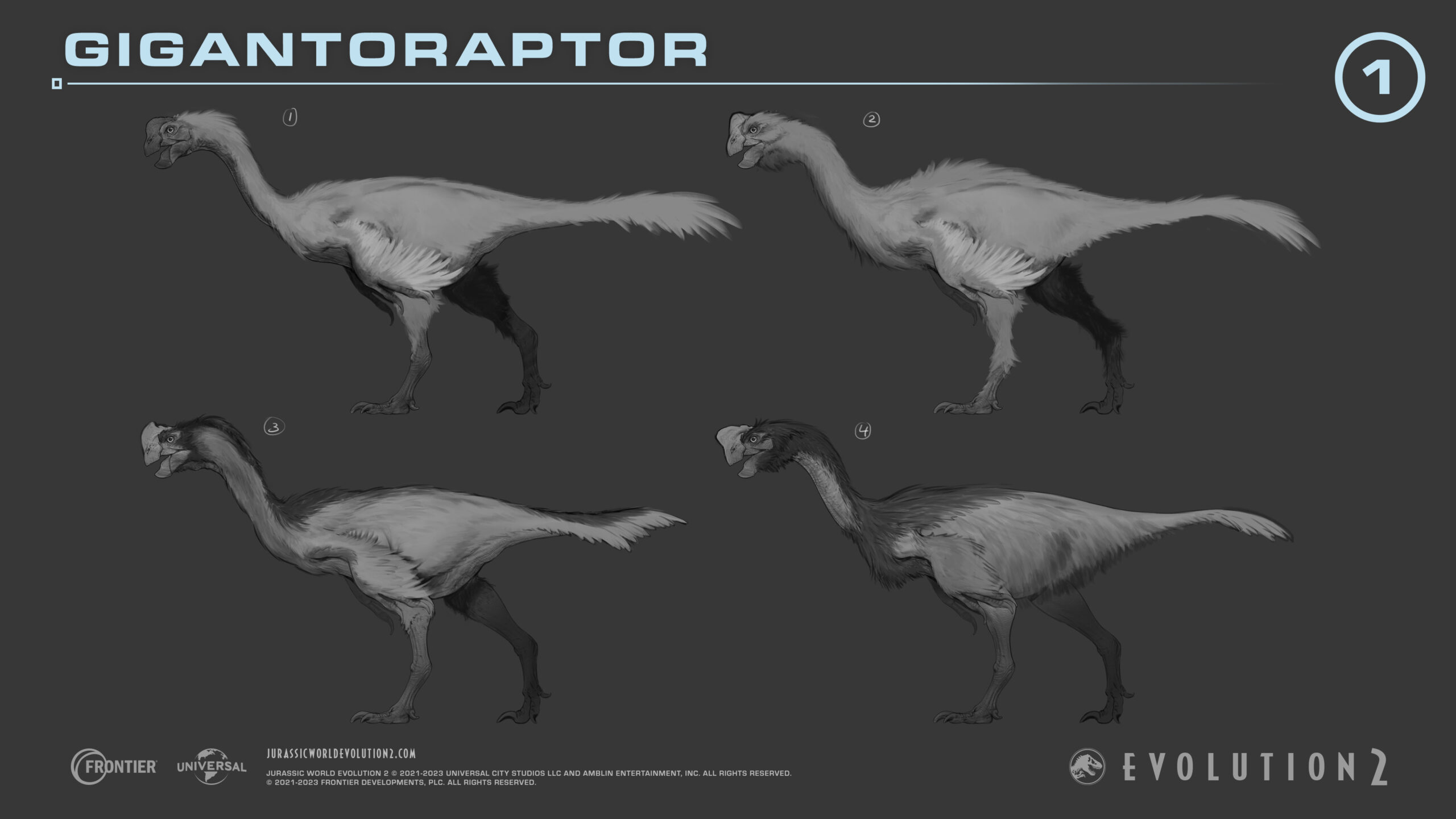
After step one, we put together some additional concepts to explore other options. As you can see below, we are adding in some extra parts to the Gigantoraptors design such as more feathers on the head, thinner wings, and some extra pattern variations on the body. Once this crucial step is complete, the team then has a selection of concepts to pick from and build the final design.
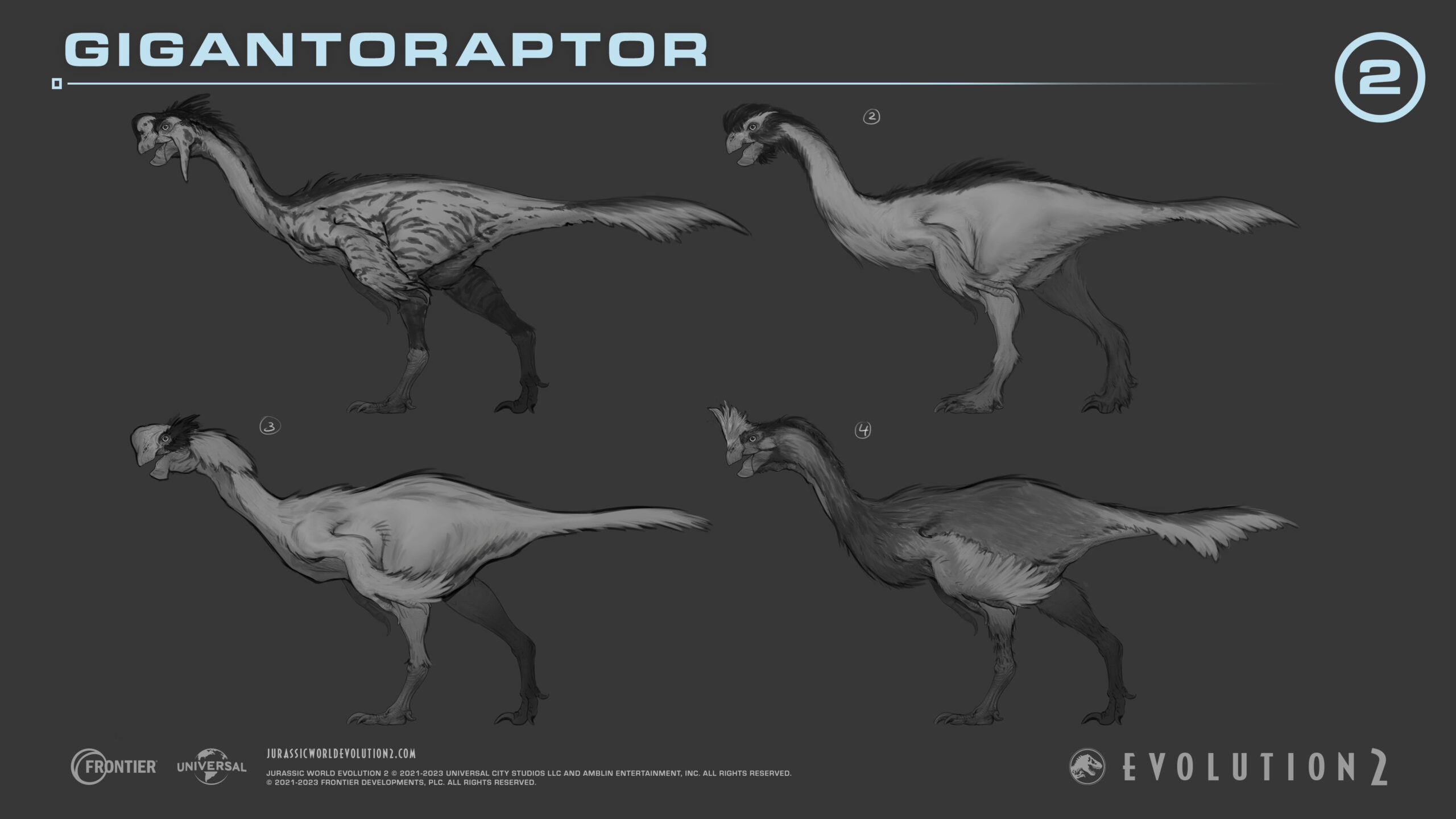
Next, we take a closer look at the head of the Gigantoraptor. The team will design a variety of head shapes, using bones, eye positions, beak layout, and feather formation to produce a mix of options. Once we’ve settled on an approach to the head, the Gigantoraptors shape is locked in, and we can then move onto the final stage of the design process.
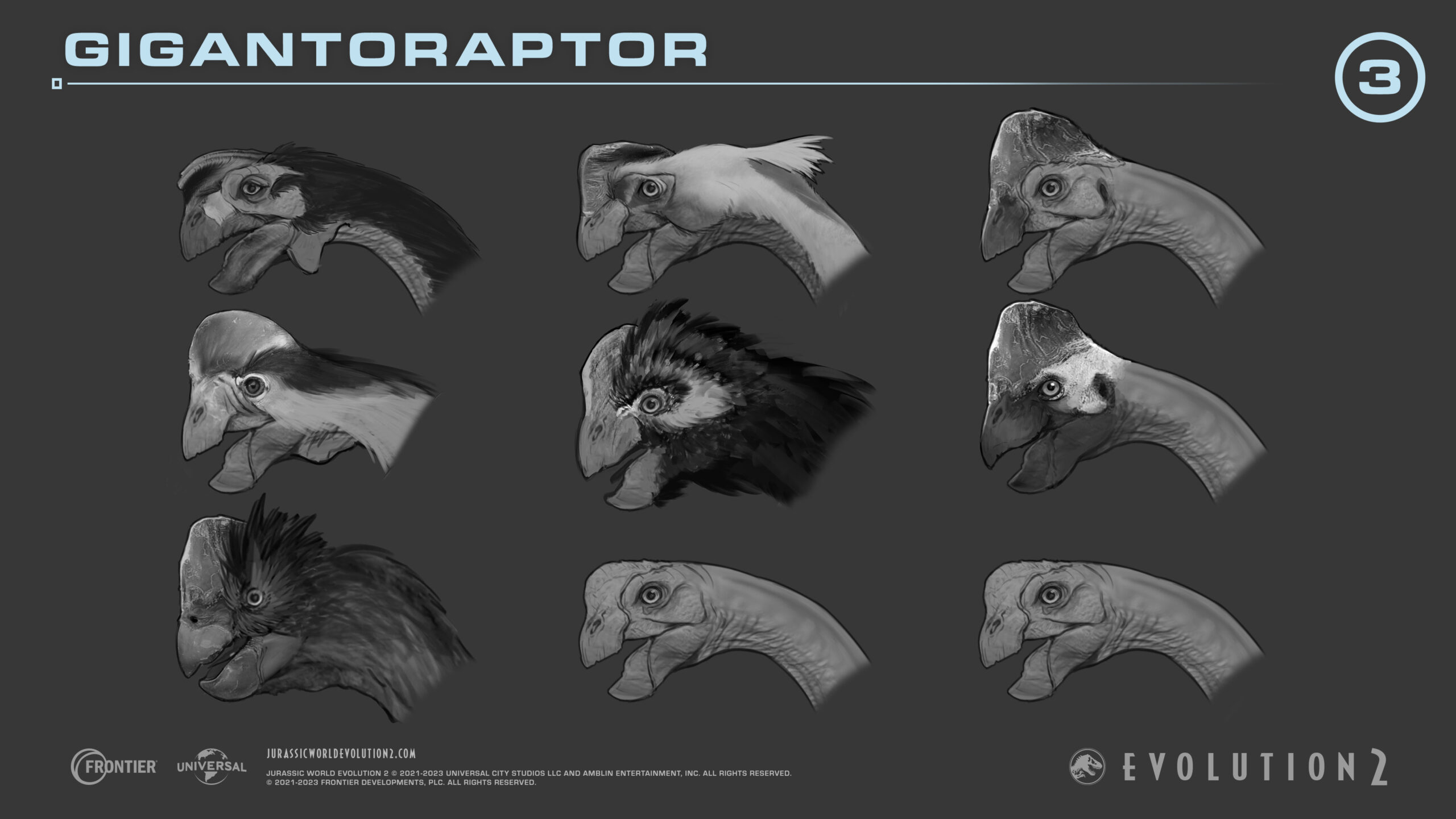
Bringing the best elements from each step we build the final concept of the Gigantoraptor. In this reference below you can see one of the colour variations for the species. Our approach to colour is just as important as the previous steps. The team will use information we have about the species and combine that with real-world references of other animals and their colour patterns. This helps us form a realistic approach to the colour and patterns of these stunning species.
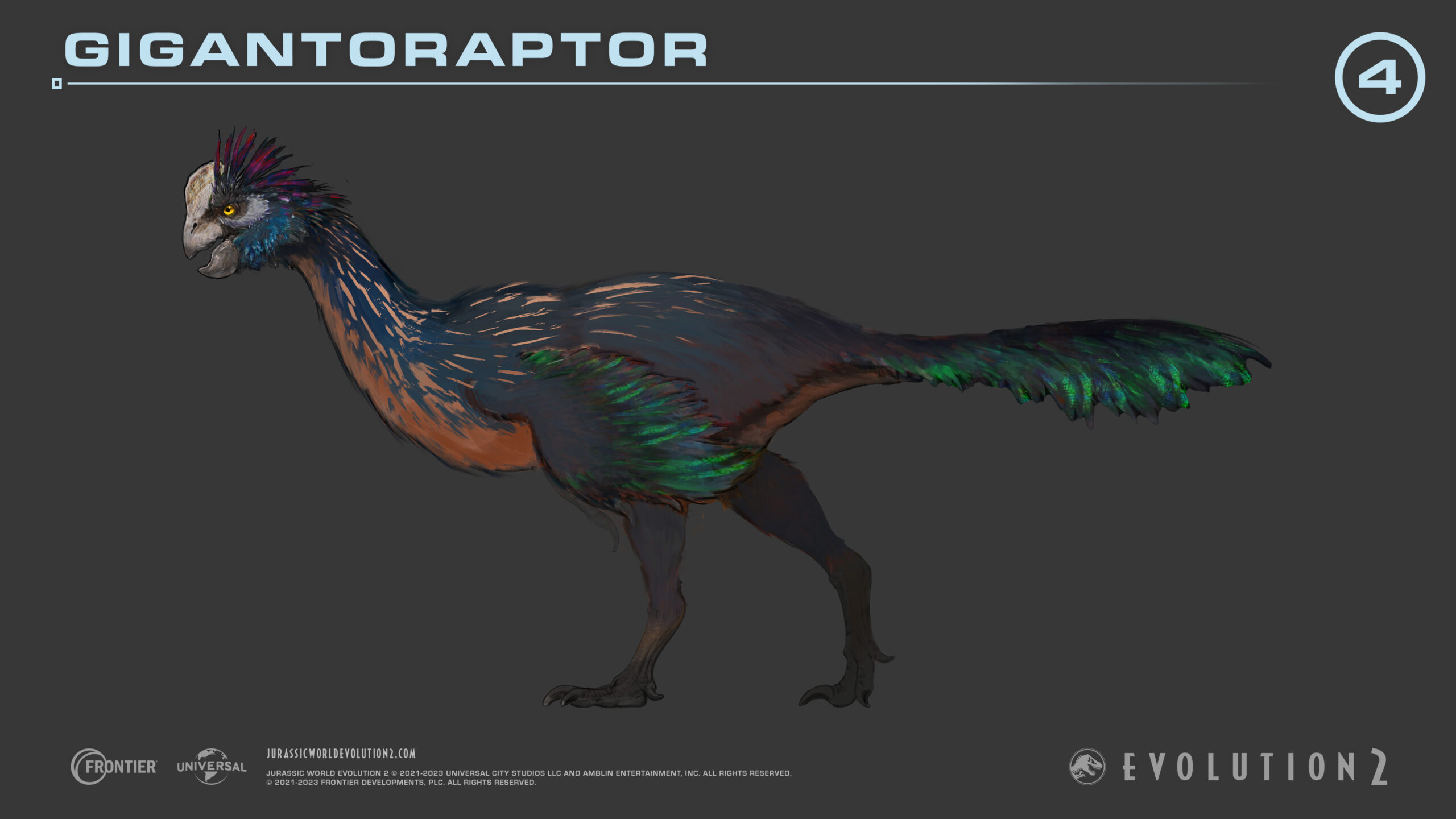
Concavenator
The next dinosaur we’ll look at is the Concavenator and although we’ll take a similar step by step approach to its design, each species has different challenges and characteristics that we need to focus on.
The Concavenator has a unique silhouette, so in these early stages of the design we wanted to focus heavily on its shape to make sure we faithfully represent the species. It’s also important that the dinosaurs we design fit within the Jurassic World franchise. The Concavenator appears in the background of Jurassic World Fallen Kingdom as a statue in Lockwood Manor, so we used this as one of our many references when designing the model. Finally, in these early stages we’ll also include some initial measurements in our concepts, this helps as a guide for the team to see how this particular dinosaur will stack up against other in-game items, dinosaurs, and environments.
Once we have the overall shape locked in, we’ll then start to add some additional details to the dinosaur. A notable feature on the Concavenator is the two narrow humps on its back, formed by extremely large vertebrae. Sometimes when we’re designing a dinosaur that has such a distinct shape, we’ll have an additional step in the design process to explore ways of approaching this. In this case we had two different designs for the back, design A features the humps being significantly taller and B has the same design but shorter.
Finally, we bring it all together! Real-world fossils of the Concavenator feature structures that resemble quill knobs, so you’ll see in this final step we’ve added some to the design. This agile predator is a great addition to the game, and I can’t wait to see how players introduce them to their parks.
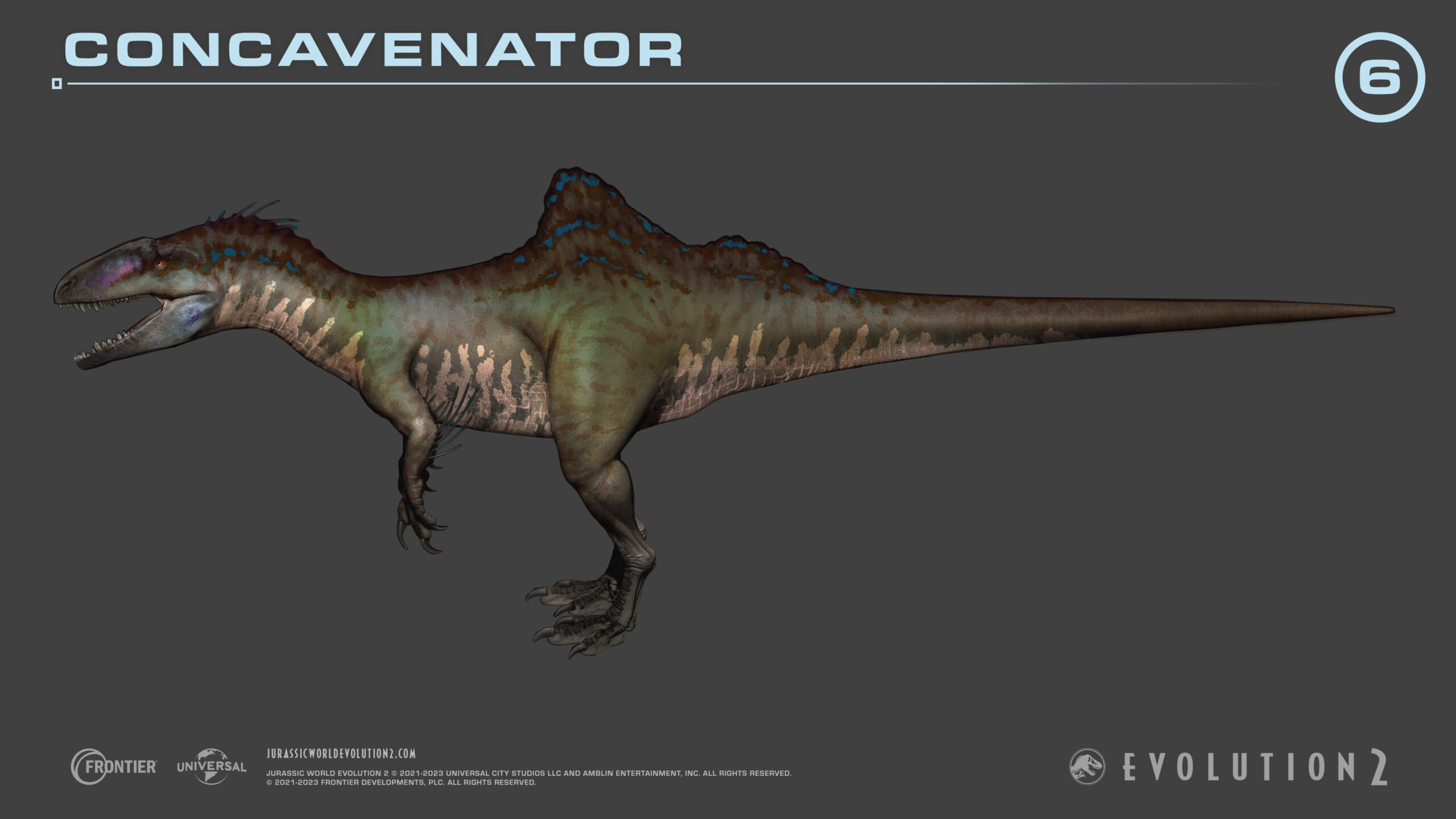
Utahraptor
Our third fierce predator in this pack is the Utahraptor. This is one of the largest known dromaeosaurs, so we had a lot of references on how to approach this design. In this first and second stage of the concept you’ll see that we’ve included some early examples to show how it would look when moving. This gives the team an opportunity to explore how the tail, neck and overall body stance would change with movement. We also included detailed concepts of the Utahraptor’s face, looking at the scales on its nose and how the feathers form. These detailed designs are integral to the team so we can create highly detailed models later on.
Towards the end of the design process, we will have a final highly detailed drawing of the Utahraptor, bringing in all the key elements of the species into one concept. This will act as the base plate moving forward for the colour and pattern variations.
Lastly, we’ll bring it all together with a final pattern design that players can then enjoy in-game and customise in their parks. Our main inspiration for this species were birds of prey and how their feathers and colours influencer their look and fierceness.
Tarbosaurus
Our last addition with this pack is the Tarbosaurus. This design is heavily inspired by the Universal Pictures, Amblin Entertainment and DreamWorks Animation Netflix Show, Jurassic World Camp Cretaceous: Hidden Adventure. We worked closely with our fantastic partners at Universal to create an accurate model of this species so fans of both the game and the show can enjoy this dinosaur in their parks.
With the shape and approach to the model complete we spent some time looking at colour and pattern variations for the Tarbosaurus, focusing on a couple favourite designs with multiple variations and then a few distinctly different alternatives. This gargantuan hunter looks fantastic in-game and will be a great fit for any large tyrannosaurine sections of players parks.
The team have done a brilliant job at bringing these exciting species to life in-game and we’re thrilled that players can now get their hands on them! Jurassic World Evolution 2: Cretaceous Predator Pack is available today on Xbox Series X|S and Xbox One.
Jurassic World Evolution 2: Cretaceous Predator Pack
Frontier Developments
$7.99 $7.19
Introduce four ferocious new predators to your parks with Jurassic World Evolution 2: Cretaceous Predator Pack. Manage and control these striking dinosaurs as they fight for dominance in your parks and search for their next meal. Welcome the following extraordinary species:
– Gigantoraptor, whose name means “Giant Thief”, is the largest known Oviraptorosaur from the Late Cretaceous era. Featuring an impressive coat of feathers and large elongated legs, the Gigantoraptor can maintain speed for an extended period of time as it chases down its prey. – Concavenator has a distinctive narrow hump, formed by two extremely large vertebrae, making its profile instantly recognisable. This agile theropod from the Early Cretaceous period is a fierce hunter that will make an exciting addition to your parks. – Utahraptor, one of the largest dromaeosaurs, is an intelligent and ruthless predator that is sure to impress your guests. With a stunning feather coat and large scythe-like claws, this predator, hailing from Utah, will stop any prey in its tracks. – Tarbosaurus, is a gargantuan hunter inspired by the Universal Pictures, Amblin Entertainment and DreamWorks Animation Netflix Show, Jurassic World Camp Cretaceous: Hidden Adventure. This unique Tyrannosaurine theropod will need a secure enclosure to protect guests from its powerful jaws.
Website: LINK

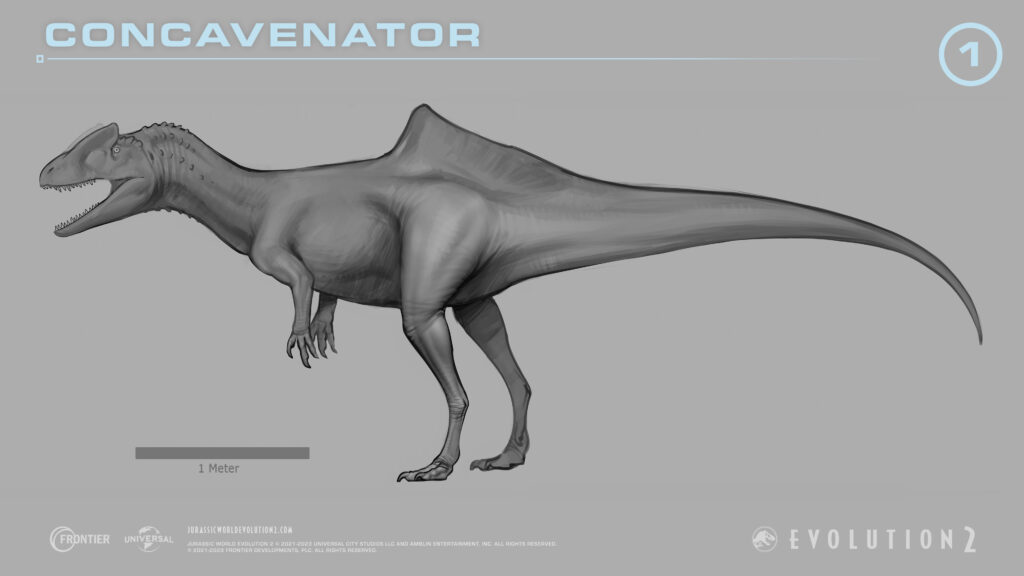
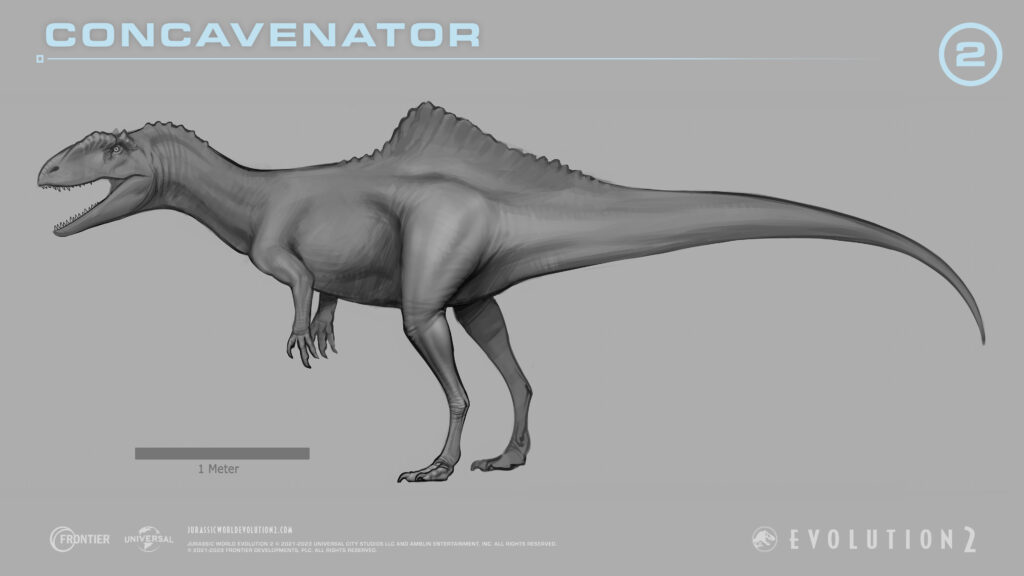
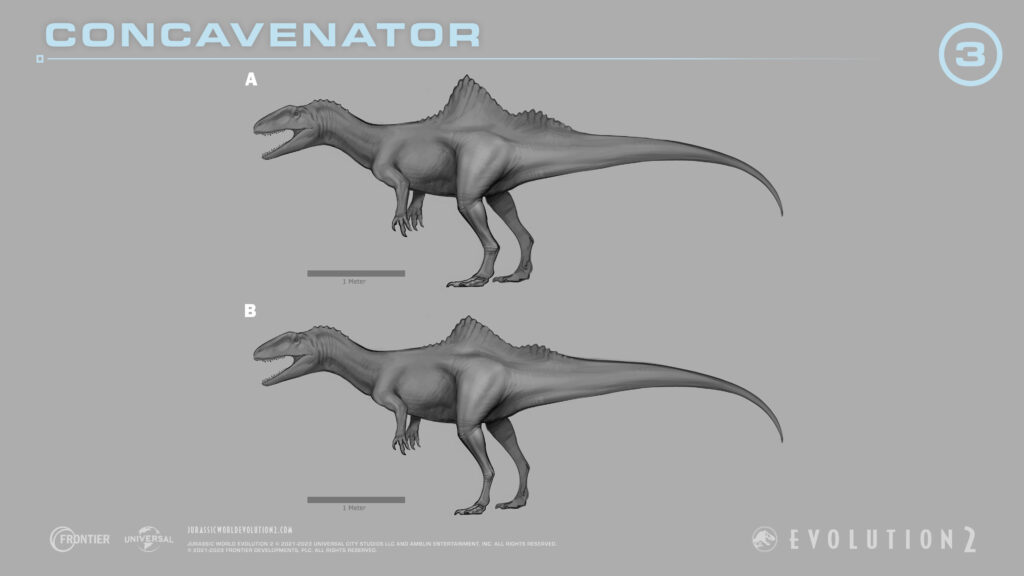
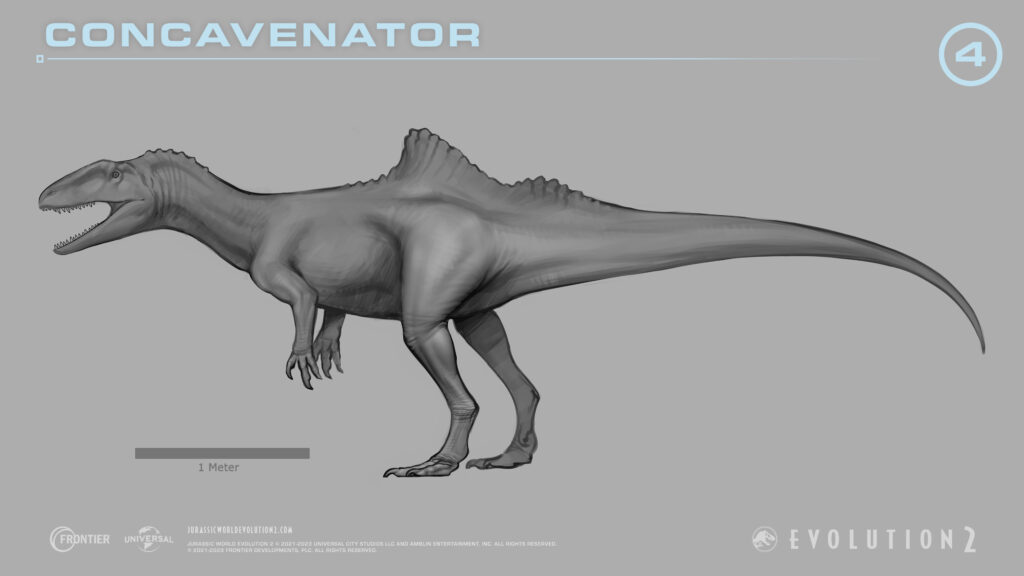
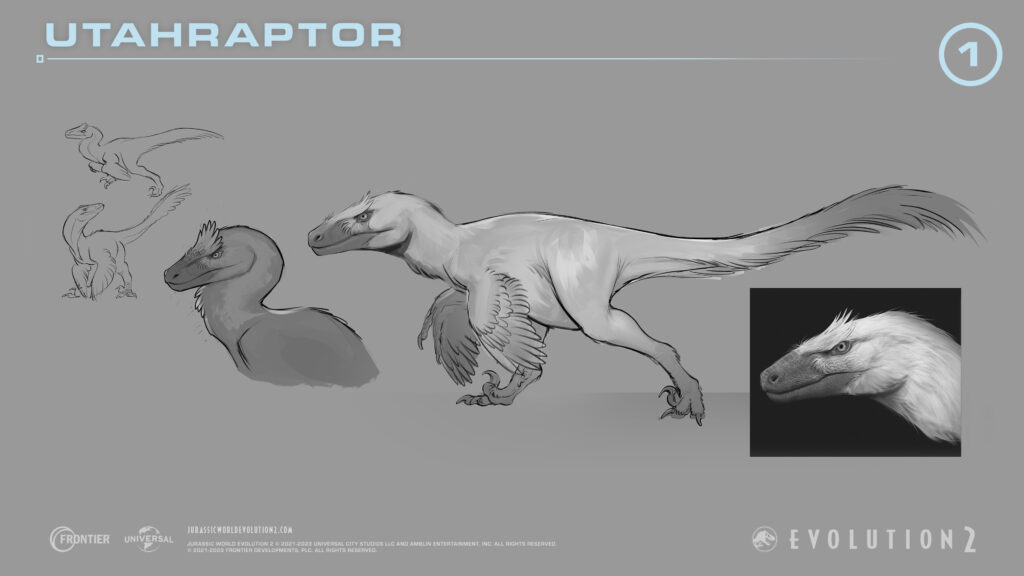
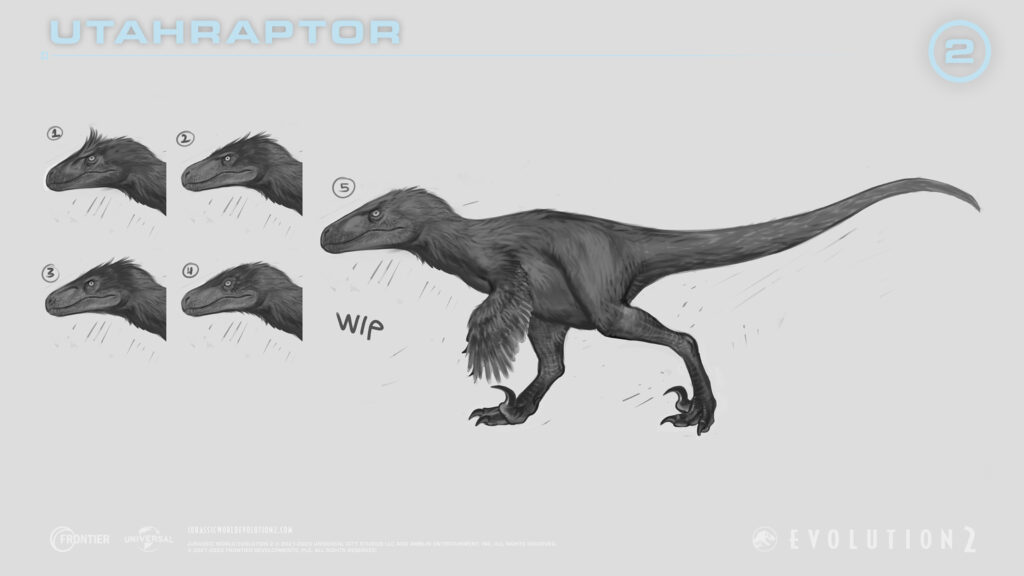
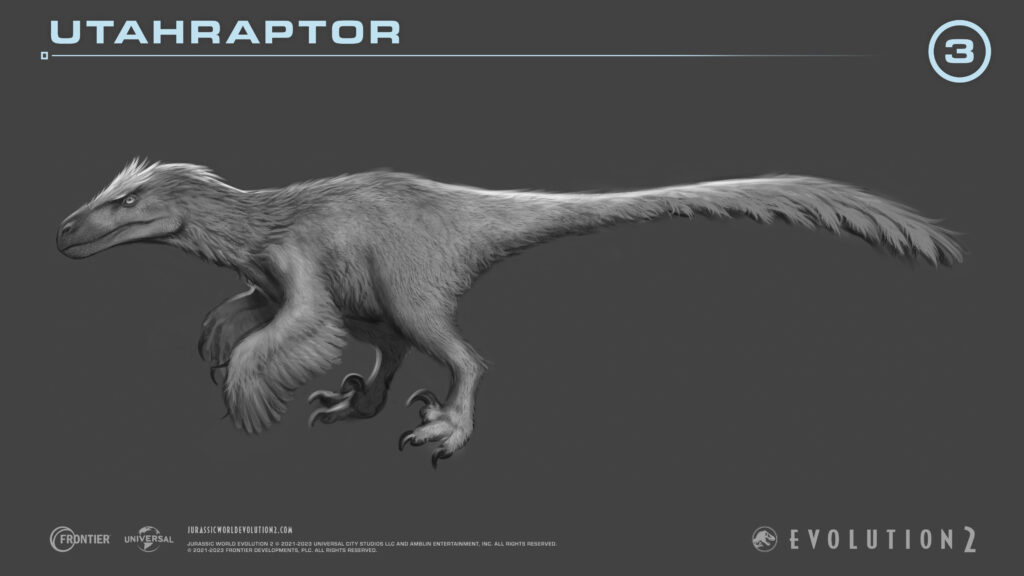
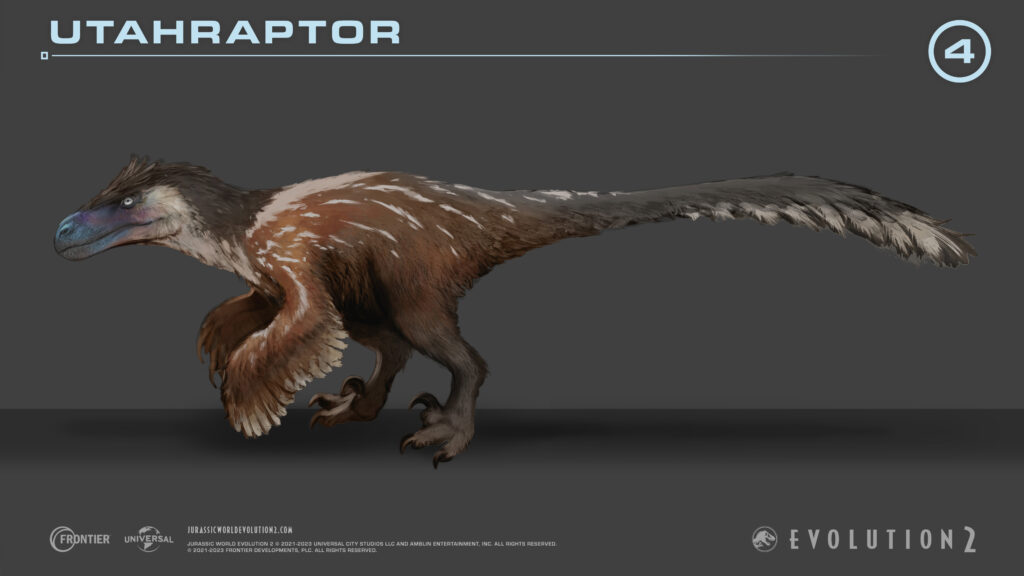
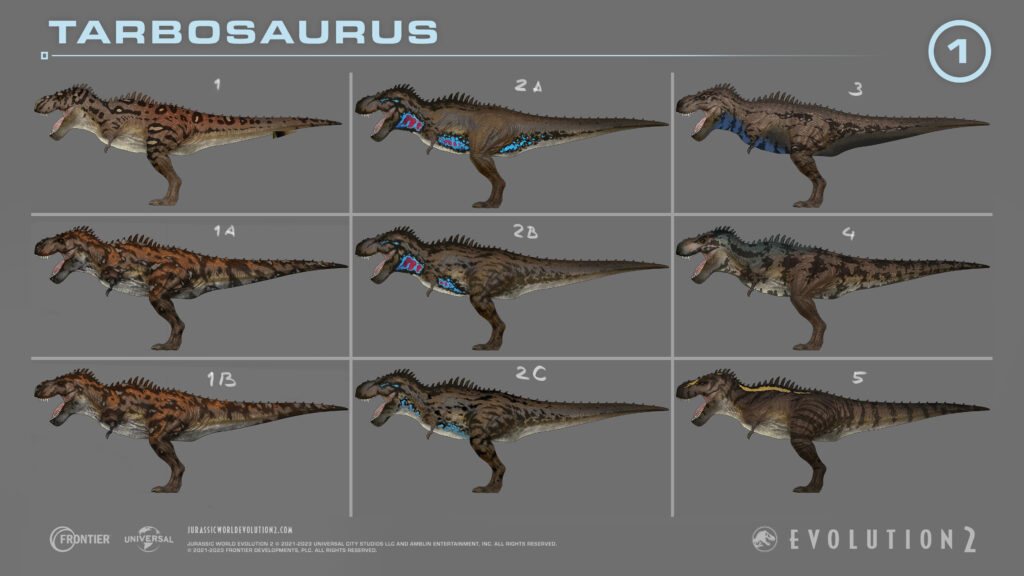
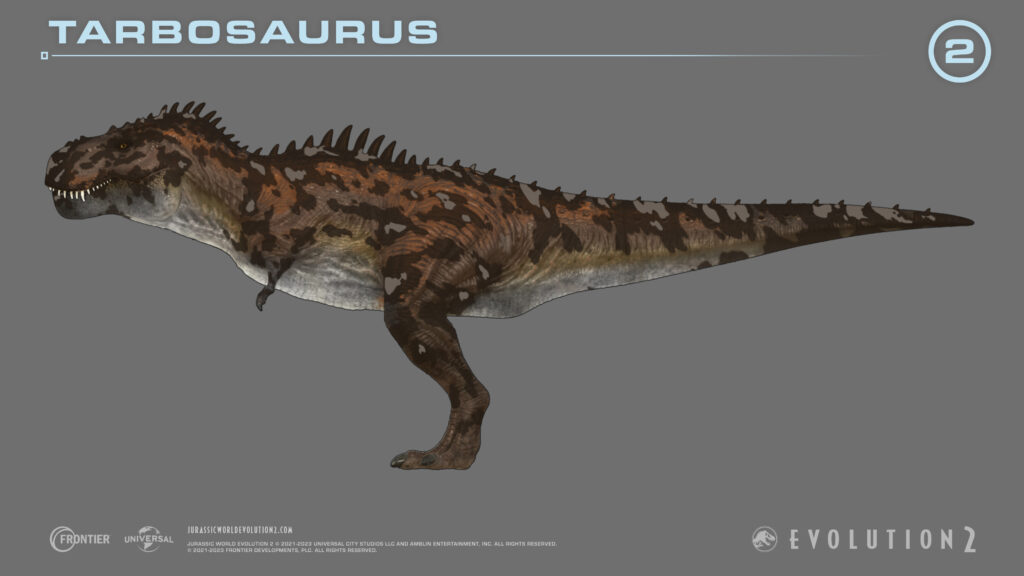
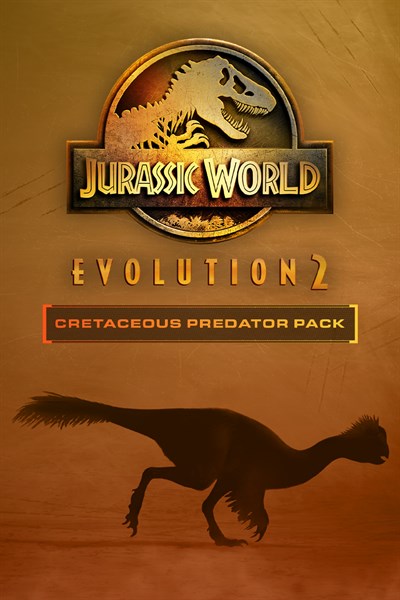
Schreibe einen Kommentar
Du musst angemeldet sein, um einen Kommentar abzugeben.